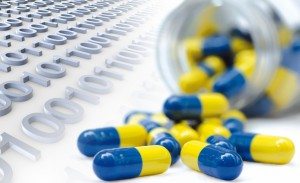 Since the Drug Quality and Security Act (DQSA) was signed into law by President Obama last year, there has been an enhanced focus on innovative solutions to help tackle the spread of counterfeit drugs. In the first part of this series, we looked at technological innovations designed to track and authenticate counterfeit drugs. Today, we will explore some additional technologies.
Since the Drug Quality and Security Act (DQSA) was signed into law by President Obama last year, there has been an enhanced focus on innovative solutions to help tackle the spread of counterfeit drugs. In the first part of this series, we looked at technological innovations designed to track and authenticate counterfeit drugs. Today, we will explore some additional technologies.
- QR Codes: The company, Ross, recently developed PharTrack, a cloud-based solution for drug product safety, security and education with the ability to track and trace pharmaceutical packages and document individual products ePedigree, using QR codes. Read our blog post for more details on QR code technology and how it is being used in the fight against counterfeit drugs.
- Serial Numbers on Packaging: Pharmaceutical companies are developing technology to stamp unique codes and serial numbers on every drug package it sells worldwide, so each shipment can be tracked and verified as genuine as it moves through the supply chain. The hope is that the solution will provide the ability to weed counterfeit drugs out of legitimate drug distribution channels, since counterfeiters won’t know the right serial numbers to stamp on their fake products.
- Radio Frequency Identification (RFID) Technology: The pharmaceutical company, Hanmi Pharmaceutical, tags 60 million pharmaceutical products using RFID technology each year, streamlining their operations, preventing counterfeit products and maximizing traceability throughout their supply chain. The technology is also being used by PurduePharma, who efficiently protects their high-value OxyContin product, and it is endorsed by the U.S. Food and Drug Administration as an effective way to protect our nation’s drug supply.
With all of the new innovations in development and currently available to track and trace drugs, Track and Trace legislation is already improving the safety and security of the U.S. supply chain. We will continue to keep readers aware of technologies that make the internet a safer place for consumers and health care professionals to buy safe and authentic prescription drugs.
####
The Center for Safe Internet Pharmacies (CSIP) and our 13 member companies have the shared goal of helping address the growing problem of consumer access to illegitimate pharmaceutical products on the Internet. Continue to read this blog for updates on CSIP’s education, enforcement and information-sharing efforts.

